Tomatoes are a common fixture in most gardens as they offer rich taste and can be used in various culinary ways. Nonetheless, the process of obtaining generous harvests necessitates comprehending the specific nutritional needs of tomato plants that can commonly be addressed by the utilization of diverse amendments. Epsom salt is one such amendment; it contains magnesium sulfate, which is significant to plants’ healthy growth. This article explores how Epsom salt works for tomatoes, including when and how it should be applied to realize maximum production. Using the scientific properties of Epsom salt allows gardeners to improve nutrient absorption.
The Role of Epsom Salt in Tomato Growth
Primarily, Epsom salt leads to the increased growth of tomatoes due to its magnesium and sulfur content. Magnesium is a vital macronutrient essential for the synthesis of chlorophyll that facilitates photosynthesis, hence increasing overall vigor in plants. The plant’s capability to generate more energy will rise due to this enhanced photosynthetic capacity, leading to more robust growth and better fruit development. Additionally, sulfur plays a significant role in the production of important amino acids and enzymes enhancing proper tomato metabolism. Epsom salt can stimulate optimal nutrient uptake leading to high yields and improved quality by addressing magnesium and sulfur deficiencies. Timing is everything; thus, applying it at crucial stages such as before blooming or fruit formation would ensure that the nutrients are available during these critical periods.
Why does timing matter for Epsom salt application?
The timing of Epsom salt is very important because it directly affects how much magnesium and sulphur are absorbed by tomato plants when they need them most. For this reason, specific growth stages, such as the pre-flowering or fruiting stage, are used when applying Epsom salts so that maximum availability occurs over important developmental phases. This time frame ensures an effective chlorophyll production, hence promoting photosynthesis and enhancing whole plant metabolism towards better growths with increased fruits yields. Otherwise, if applied at times when not supposed to, it may lead to nutrient leaching or reduced efficiency, making these tomatoes less healthy and productive in our gardens. Thus careful observation of time for applying epsom salt results into an optimal nutrient up take improving crop performance.
How does the growth stage of the plant influence application timing?
Different stages of growth have different nutrient requirements thus affecting application timings for Epsom salts on tomato plants. In the seedling phase, strong root development requires magnesium supplements, whereas the vegetative stage needs magnesium for the synthesis of chlorophyll, which makes possible efficient photosynthesis by the leaves. Nutrient demand increases dramatically prior to flowering; hence, applying Epsom salts makes sure that the plant has enough magnesium and sulfur for flower initiation, which subsequently gives rise to fruits. Applying Epsom salts during these critical stages will help optimize nutrient availability, thus promoting robust growth, high fruit yields, and quality. It is important for farmers and gardeners who need the best outcome in tomato cultivation to be aware of these growth stages.
Can improper timing affect tomato plant health?
In the case of inappropriate time of application, it might interfere with the balance or uptake of nutrients, thereby significantly affecting the health of tomato plants. This can result in nutrient deficiencies or toxicities when applied too early or late in a season, which hampers production and negatively impacts fruit-bearing ability. Such applications could increase excess soil levels of magnesium thus reducing uptake of essential nutrients such as calcium and potassium that are needed for proper crop growth. Alternatively, delayed applications may prevent them from receiving vital magnesium during critical stages leading to diseases like blossom-end rot and poor fruit set. Therefore, tomato plants require precise timing throughout their developmental process so as to obtain maximum benefits including making them healthy while producing many fruits hence increasing their productivity.
Applying Epsom Salt During Planting
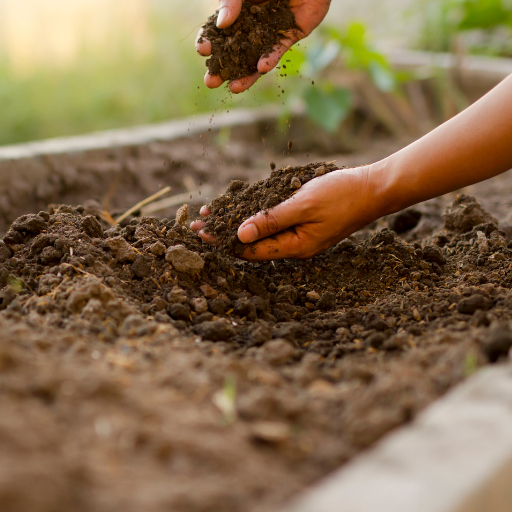
The use of Epsom salt during the planting stage is highly beneficial to tomato plants as it helps in establishing strong root systems. Incorporating Epsom salt into the soil at the time of planting can enhance magnesium availability required for chlorophyll production and photosynthesis. Common advice is to mix about one tablespoon of Epsom salt uniformly through the root zone in the hole before planting. Not only does this method stimulate robust growth but also helps minimize transplant shock, thus promoting healthy growth and development of the plant. Furthermore, sulfur present improves the nutrient absorption potential of an entire plant which consequently leads to early growth and fruiting ability. However, it is important to combine this application with a full fertilization program so that nutrient interactions will not hinder their growth.
How you benefit from using Epsom salt when planting
Using Epsom salt while planting tomato plants offers various advantages that significantly support overall plant health and yield. First, magnesium, which is found in Epsom salts boosts chlorophyll synthesis necessary for photosynthesis hence initiating robust plant development from germination onwards. Second, another element contained in these salts is sulfur which ensures uptake of other nutrients that are essential for normal functioning by plants from soil. Additionally, applying Epsom makes soil structure better by increasing aeration and moisture retention needed for strong roots development. Lastly, this practice has been reported to reduce the incidence of physiological disorders enhancing fruit quality by supporting even ripening and sugar development within fruits.
Mixing Epsom Salt into Soil Before Planting
For optimal results on mixing Epsom salt into soil before planting adhere to these guidelines: Start by measuring appropriate quantity depending on how big your plantation is; usually one tablespoon per hole for individual plants. Prepare your site accordingly by breaking up ground twelve inches deep, allowing air circulation within the soil. The advised process is to sprinkle the measured amount equally around all sides if available space, then blend nicely with the rest of the garden tools, such as a garden fork or a trowel. Finally, refill the hole with soil and apply enough water to dissolve the Epsom salts for them to be taken up by plants as they establish in order to promote their root zone absorption. This technique guarantees that there is enough magnesium and sulfur necessary for maximum growth and health of plants.
Is Epsom salt good for seedling trays?
From my experience, using Epsom salt in seedling trays can be beneficial due to its high content of magnesium. It helps in the photosynthesis process and hence supports the general healthy development of seedlings. To this end, I recommend adding a small quantity, which should not exceed half a teaspoon per quart of irrigating water used on seedlings. With that, it ensures the availability of magnesium when needed most during the tender plant growth phase, thus avoiding any chances of nutrient deficiencies. But then again caution must be observed since excess application could result into nutritional imbalances; therefore, one has to take it easy so as to get maximum benefits from Epsom Salt in Seedling Trays.
Using Epsom Salt During the Vegetative Stage
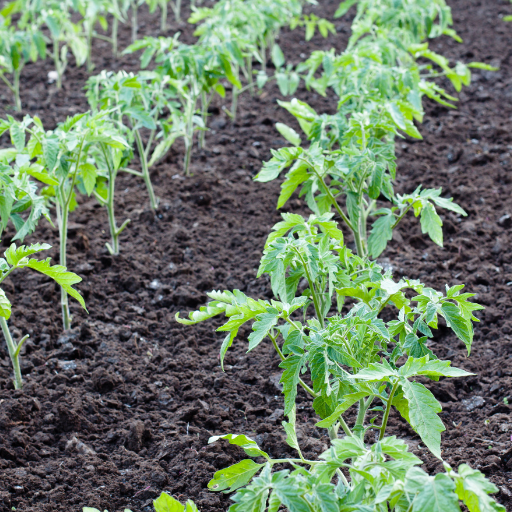
Epsom salt, during the vegetative stage, is organic and packed with magnesium and sulfur, both of which are necessary for strong plant growth. Chlorophyll production needs sufficient magnesium to be synthesized by plants at this stage so as to improve photosynthesis and leaf formation. Some people suggest that farmers dilute one tablespoon of Epsom salt in a gallon of water then either spray the foliage or drench soil every four to six weeks with it. The most notable advantage of applying Epsom salts, such as tomatoes and peppers, is that they have an imbalance in magnesium deficiency; thus, their growth can be corrected by a crop like this. It will, therefore, be essential to observe plant responses for optimum nutrient absorption instead of potential toxicity since over-application might disrupt other essential nutrient balances.
After planting when should I begin using Epsom Salt?
Epsom salts are usually applied two weeks after planting when seedlings have anchored themselves firmly into the ground and are actively growing. This allows plants to get the needed nutrients without causing burn from excessive feeding. Nevertheless, it is important that you wait until your plants show initial signs that they are ready to take up magnesium as shown above before introducing epsom salts into their regime. This means that continuously monitoring the health status of the crops throughout their growth period is critical as it helps in ensuring optimal usage of Epsom salt in different seasons.
How frequently should you apply Epsom salt during early growth?
During early growth, you should use epsom salts every 4-6 weeks approximately at recommended rates. The aim here is not to provide too much sulfur or magnesium, thereby overwhelming the plants, but rather just enough amounts required for healthy development without hurting them. Applications generally coincide with visible plant growth and root initiation seen around 1-2 weeks post-planting according to expert advice obtained from various sources. Particular treatment requirements may vary across crop species; hence, adjustments need to be made. This will help in ensuring that soil and plant health are maintained at optimum levels throughout the growth phase as it is crucial not to over-fertilize.
Can Epsom salt support stem and leaf development?
Magnesium sulfate, which is one of the main components of Epsom salts, facilitates stem and leaf formation by providing necessary nutrients essential for photosynthesis and overall plant vitality. Without a doubt, it has been scientifically proven that magnesium plays a direct role on chlorophyll content hence its involvement in photosynthesis drives the extent to which plants are able to convert sunlight into energy. Ideal greenness and vigor in leaves can be achieved through foliar magnesium concentrations ranging between 0.2 percent to 0.5 percent.
Moreover, sulfur in Epsom salts promotes the synthesis of amino acids and proteins, thus facilitating strong foliage growth. It has been proven that each season requires a spray of around one tablespoonful per gallon every four weeks, depending on specific crop requirements (Lingam et al., 2019). This treatment enhances the density of leaves while also stiffening stems, thereby strengthening them against environmental adversities.
Regarding pH levels within the soil along with nutrient presence like magnesium or sulphur available for plants’ uptake, epsom salts are best used when they fall within a pH range of 6 – 7of soil acidity. How regular Epsom salt should be applied depends on the stage at which a crop is growing as well as its surrounding environment.
Timing Epsom Salt Application During Flowering
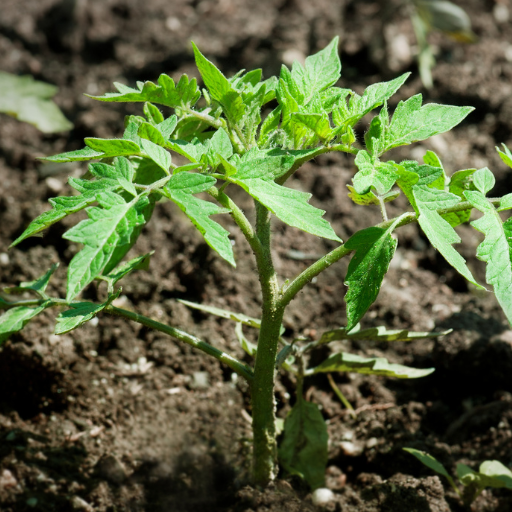
Optimizing plant health and yield requires timing the application of Epsom salt during the flowering stage. Magnesium and sulfur should be applied when the first flowers begin to form since research has shown that they are essential nutrients in flower setting and fruiting processes. Normally, a dilution of 1 to 2 tablespoons/gallon of water is used once every three to four weeks throughout the flowering period. With this frequency, more blossoms are produced, resulting in healthier bloom production as well as overall improved plant vigor; therefore, magnesium levels in the medium may need boosting. Besides, environmental conditions like humidity and temperature can also help determine treatment time depending on peak nutrient uptake times.
Why flowering is a critical time for magnesium?
Several physiological processes in plants during the flowering stage heavily depend on magnesium. For example, chlorophyll molecules consist of central elements which are magnesium atoms thus making it essential for photosynthesis. Flowers and fruits’ development greatly rely on adequate sunlight conversion into energy by plants having enough magnesium content. Additionally, magnesium helps facilitate transportation of other vital nutrients like phosphorous which is important for flower formation.
Technical parameters indicate that reduced flower size and quantity, as well as poor overall fruit maturity, may arise from insufficient amounts of magnesium in soils. Should these levels decline below 0.2% (in relation to dry matter), symptoms such as leaf curling, yellowing or reduced growth rates may appear. In terms of optimal nutrient levels, a balanced soil nutrient profile should maintain magnesium concentrations within 0.25% to 0.5%. It’s therefore necessary to strike this balance especially during blooming period so as to ensure maximum harvesting while at the same time ensuring there is adequate energy generation given higher metabolic requirements during this growth phase by plants hence Epsom salt application would be very helpful in raising Mg concentration thereby flowers would be abundant leading to high crop turnout.
How to effectively apply Epsom salt during flowering
For effective application of Epsom salt during the flowering stage, dissolving 1 or 2 tablespoons into a gallon of water and using this solution to water the plants once every four to six weeks is recommended. In this case, it will ensure that magnesium is readily available for the roots up-take. An alternative foliar spray can also be used whereby a mixture of one tablespoon and one gallon of water will be sprayed on leaves directly. Applying during early morning or late evening enhances absorption and reduces evaporation rates. Alternatively, incorporating Epsom salt into the soil before planting guarantees a continuous supply of magnesium throughout plant growth period. Soil tests are normally done to monitor magnesium levels; thus, in case they need correcting, then there may be a need for more Epsom salt application so as to sustain the optimum state for blooming with maximum fruit production.
Should Epsom salt be used in combination with other fertilizers?
Epsom salts can effectively be combined with other fertilizers, thus improving nutrient availability and uptake by plants. Combined with NPK standard fertilizers, Epsom salt provides magnesium, an essential macronutrient that causes chlorophyll synthesis and helps photosynthesis take place.
- Nutrient Synergy: According to a study done at the University of California, magnesium helps with nitrogen metabolism. The nitrogen requirement is generally around 80-100 ppm, and plants can utilize it more efficiently when there is sufficient magnesium. This makes magnesium important for achieving the desired nitrogen concentration during fertilization.
- Application Rates: It is recommended that optimal levels be maintained at 0.25%- 0.5% Mg, which can be determined through soil tests. Inclusion of Epsom salt into other fertilizers may require 1 tablespoon per gallon of water for foliar application, improving solubility and plant availability.
- Timing and Compatibility: For example, the report from Purdue University suggests that Epsom salt should be applied along with other fertilizers at similar times mainly during the early stage of growth but before flowering occurs. This is evident because calcium transport and mobility are mediated by magnesium particularly crucial for fruiting plants which require huge quantities of calcium necessary to keep their structure firm.
The use of Epsom salts in conjunction with other fertilizers can enhance nutrient quality, resulting in increased crop yield and resilience over time. Therefore, consistent soil testing to meet specific nutrient requirements will ensure that Epsom salt plus general fertilizer application does not lead to nutritional imbalances, leading to poor yields in crops.
Applying Epsom Salt During Fruit Set and Development
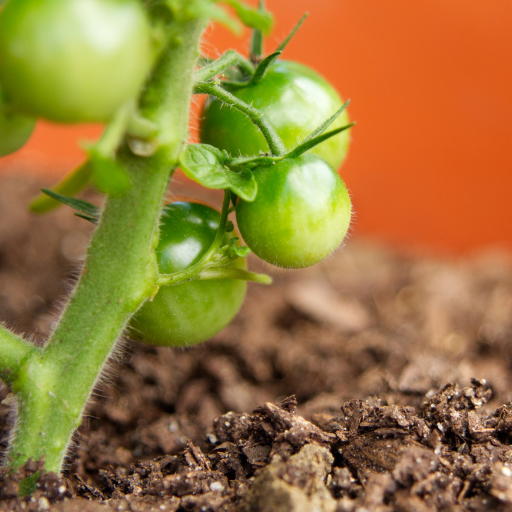
To maximize fruit quality and yield, Epsom salt should be used at the time of fruit set and development stages. Studies have shown that magnesium plays a crucial role in photosynthesis, which directly affects fruit development. As fruits initiate and grow, their need for calcium and magnesium increases thereby necessitating timely application. Most agronomic guidelines recommend that Epsom salts should be included in irrigation water or applied as a foliar spray during key growth periods (usually flowering and fruit set stages). This approach improves magnesium availability as well as other nutrients uptake hence leading to better taste quality, firmness, and fruit size. Additionally, incorporating Epsom salt during these critical times can help alleviate physiological problems attributed to low calcium levels thus making plants healthier while increasing the percentage of marketable yields.
How does Epsom salt help during the fruiting stage?
Epsom salt is helpful during the fruiting phase by providing magnesium, an important mineral for chlorophyll production and photosynthesis which determines fruit quality as well as yield. The presence of magnesium ensures efficient utilization of other vital nutrients, specifically nitrogen and phosphorus, therefore enhancing general nutrient absorption and promoting healthy growth. Likewise, the sulfate element in Epsom salt helps in the synthesis of amino acids together with secondary metabolites boosting plant resilience alongside flavor profiles, especially during the ripening period of fruits. This supports increased firmness/sizes as well as preventing physiological disorders like blossom-end rot, often caused by calcium deficiencies, among others. Therefore, introducing Epsom salt into the crop system at this stage will ensure optimal plant health and highest possible supply of high-quality fruits.
When And How To Use Epsom Salt For Bigger Tastier Tomatoes
For bigger tastier tomatoes apply epsom salts when plants are establishing roots, at flowering time and when fruit forms; it is recommended to use 1-2 tablespoons per gallon mixed with water sprayed on foliage or poured around the plants base every four to six weeks. The aim is to avoid overuse because too much magnesium could cause imbalance of nutrients. Timing is important; applying Epsom salt at the start or during high temperature and stress periods can enhance its good performance by enabling plants to overcome environmental challenges while ensuring that fruits grow healthy.
Can Epsom Salt Prevent Blossom-End Rot During Fruiting?
Despite being a partial remedy for blossom-end rot, it would be wrong to assume that Epsom salt alone can prevent this problem. Insufficient calcium supply arising from irregular watering practices and soil moisture levels mainly causes blossom-end rot. While magnesium, which comes from Epsom salt, contributes significantly to plant fitness, it cannot replace the need for enough calcium uptake. However, it is crucial to note that supplying adequate amounts of calcium in balanced form (usually with lime or gypsum) as well as regular applications of Epsom salts could increase nutrient uptake and overall resilience of plants. Also, keeping consistent soil wetness prevents physiological stresses leading to blossom end rot.
Signs of Incorrect Epsom Salt Application Timing
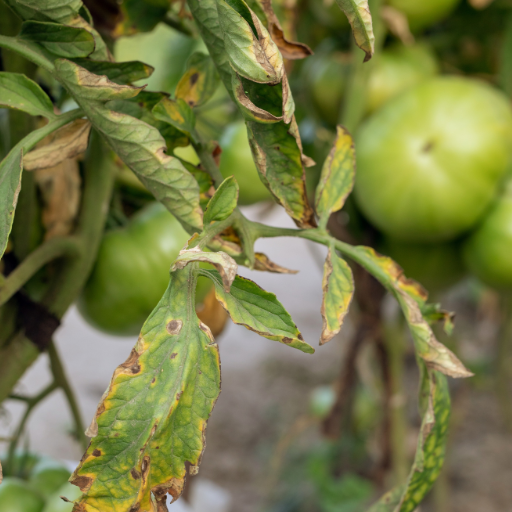
Different signs can show that the application of Epsom salt is incorrect at times. When the leaves of a plant start to turn brown and crispy around the edges, it may be an indication of over-application or leaf scorch which is mainly caused by increased magnesium levels that disrupt nutrient balance. Conversely, if Epsom salt is applied too late in the growth cycle, poor fruit development or reduced flowering may be noticed resulting in smaller or fewer fruits being produced. Also, where there has been no timely application of Epsom salt on critical phases of growth, indicators such as interveinal chlorosis might still be noticed among leaves thus confirming magnesium deficiency within them. For this reason, regular monitoring of both plant health and nutrient levels is crucial to ascertain that Epsom salt’s use guarantees its efficacy and proper time for optimum crop development.
What if I apply my Epsom salt very early or too late?
When should one apply Epsom salts? The timing for Epsom salt application can greatly affect plants’ productivity and health. If administered prematurely, plants suffer because excess magnesium interferes with the uptake of other essential nutrients like calcium and potassium leading to nutrient imbalances. This condition is sometimes quantified using nutrient concentration ratios; say, a Mg:Ca ratio greater than 1:7 could result in deficiencies, especially in crops susceptible to blossom-end rot.
On the other hand, late application of Epsom salts affects fruit development negatively and reduces ability for flowers to form properly. According to research findings on magnesium’s importance during the flowering stage, the target range should be about 0.3% – 0.4% in foliage tissue (Hanna). Introducing it more than necessary time-wise by adding it after a certain point during vegetative stages means enough amount of Magnesium may not be obtainable from the soil source, therefore leading to small tomato fruits (Martyn et al., 2019). In addition to this, the timing of Epsom salt being applied must coincide with peak nutrient uptake periods that come when plenty of crops are in their early growth phase as well as prior to flowering time. Therefore, regular soil tests and plant tissue analysis must be undertaken so as to determine the right time for application and quantify nutritional requirements in a way ensuring that such introduction of Epsom salts is synchronized with stages of a plant’s development.
How do you know if your tomatoes weren’t getting enough Epsom salt at the right time?
There are several signs that can indicate magnesium levels were inadequate due to improper application timings of Epsom salts on tomatoes. The first symptom is yellowing between veins, which is called interveinal chlorosis, an indication of low magnesium content within them (Martyn et al., 2019). As a result, it usually starts showing up on older leaves first because Magnesium gets reallocated from old leaves into newer ones. Additionally, blossom end rot might occur due to low Epsom salt since there will not be enough calcium; hence, dark sunken lesions can be observed on the fruit’s bottom halves, which shows a lack of calcium compounded by too little Mg. That means poor growth has been accompanied by reduced total crop performance with no or very few fruits. Therefore, these symptoms should be watched closely, especially during times when growth is crucially important, and they may help decide whether tomato plants need extra nutrient balancing using Epsom salt. Well-timed soil testing and leaf tissue analysis provide further information about nutrient status facilitating changes in when to apply it again thus assisting farmers minimize guesswork about their crops’ nourishment needs.
Can you fix time errors and how?
Certainly, it is possible to correct timing mistakes in relation with the application of Epsom salt on tomatoes; however, it will have to be done carefully. Once symptoms of magnesium deficiency are detected, one should immediately use Epsom salt (in solution) at a recommended rate of 1-2 tablespoons per gallon of water to ensure that the soil around the root zone absorbs the entire volume. Furthermore, it is important to address any calcium deficiencies that may have arisen, especially if there are symptoms like blossom-end rot, by incorporating calcium sources such as gypsum or calcium nitrate into the soil. Regular monitoring plant health and conducting soil tests post-correction are essential for establishing nutrient levels and evaluating success of remedial action. Additionally, introducing a more regimented fertilization program matching the growth stages of the crop can help avoid similar issues with Epsom salts and other nutrients related to their timing in the future.
Reference sources
- Better Homes & Gardens
- Source: Better Homes & Gardens
- Summary: This article discusses the potential downsides of using Epsom salt on tomatoes, suggesting that it might do more harm than good and offering alternative methods to support plant health.
-
University of Minnesota Extension
- Source: University of Minnesota Extension
- Summary: This article advises against using Epsom salts unless there is a confirmed magnesium deficiency, as unnecessary use can harm plants and soil health.
-
Washington State University
- Source: Washington State University
- Summary: The document highlights that while Epsom salts can relieve magnesium deficiency in tomato plants, it does not necessarily improve yield, and indiscriminate use should be avoided.
Frequently Asked Questions (FAQs)
Q: What are the benefits of using Epsom salt for tomato plants?
A: Epsom salt is a natural source of magnesium and sulfate, which are essential nutrients that tomato and pepper plants need for healthy growth. Adding Epsom salts can help improve fruit production, enhance seed germination, and prevent magnesium deficiency in your vegetable garden.
Q: How do I know if my tomato plants need Epsom salt?
A: Conducting a soil test is the best way to determine if your soil is deficient in magnesium. Symptoms of magnesium deficiency in tomato plants include yellowing leaves with green veins. If you notice these signs, it might be time to add Epsom salts to your garden.
Q: How should I apply Epsom salt to my tomato plants?
A: You can apply Epsom salt for tomatoes directly to the soil or as a foliar spray. For soil application, mix two tablespoons of Epsom salt into the soil at the base of each plant. For a foliar spray, dilute two tablespoons of Epsom salt in a gallon of water and apply using a spray bottle.
Q: When is the best time to add Epsom salt to my tomato plants?
A: It’s best to add Epsom salts when you transplant your tomatoes in late spring. You can also apply it throughout the growing season if you notice signs of magnesium deficiency or if a soil test indicates a need for additional magnesium.
Q: Can I use Epsom salt for other plants in my vegetable garden?
A: Yes, Epsom salt is beneficial for other plants in your vegetable garden, including pepper plants. It supports healthy growth and improves the overall health of the vegetables by providing essential nutrients.
Q: How often should I apply Epsom salt to my tomato plants?
A: You can apply Epsom salt every four to six weeks during the growing season. Be sure to monitor your plants and adjust the frequency based on their health and the results of any soil tests.
Q: Are there any risks associated with using Epsom salt for plants?
A: While Epsom salt is generally safe, overuse can lead to an imbalance of nutrients in the soil. Always follow recommended application rates and consider conducting a soil test before adding Epsom salts to ensure your plants need it.






